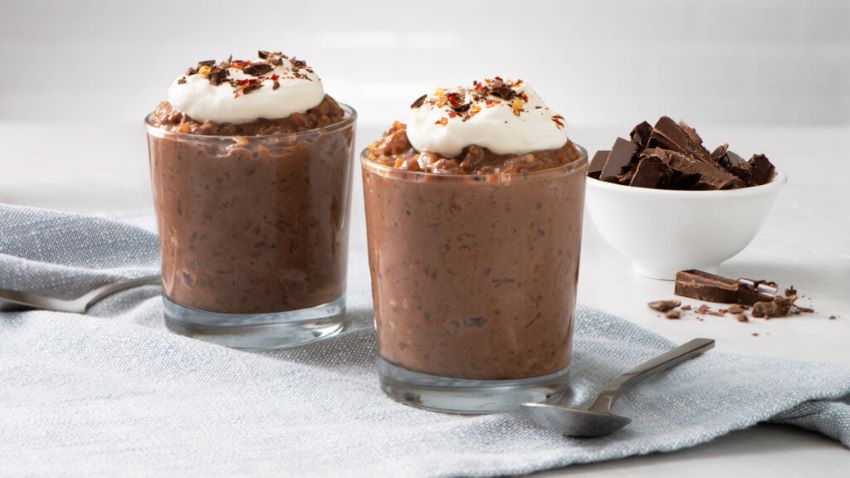In Mexico, arroz con leche is a longstanding traditional dessert, and there are as many ways to make it as there are grandmothers willing to share their recipe.
While it’s a simple enough dish, there are secrets to success that involve the ingredients, cooking methods and level of patience (ahem). Traditionally arroz con leche, or rice pudding, is made by slowly, slowly cooking rice in sweetened whole milk until the rice is soft and the milk has thickened. Cinnamon, vanilla and sometimes nutmeg can be added before serving.
Some people like an arroz con leche that’s more soupy; others prefer it firm. That’s just a matter of cooking time, the ratio of rice to milk and, to some degree, about the type of rice you’re using.
What’s the best kind of rice to use? Some say long-grain rice is best, some swear by short-grain for a creamier result. Some believe in arborio rice. Quien sabe? But don’t use “Minute Rice” or any kind of arroz precocido (precooked rice); it defeats the purpose of the rice starch cooking into the pudding.
Sugar is the time-honored sweetener, and for good reason: using granulated sugar or piloncillo (unrefined whole cane sugar) helps the milk caramelize as it cooks down, creating a complex depth of flavor.

But time-saving versions in some recipes use sweetened condensed milk instead of sugar, and/or use leftover or precooked rice rather than cooking it slowly in the milk. Can you do this? Sure. Will it taste the same? Well, I don’t think so, although I’ll still happily eat it at my favorite taco stand.
Rice pudding is a favorite all over the world, where it’s called by different names and baked, boiled and simmered in a variety of ways. Legend tells us a big bowl of kheer was the Buddha’s final meal before his enlightenment. In Chinese cuisine we find ba bao fan, made with eight kinds of fruits or nuts and eaten at the New Year. The Lebanese serve meghli to celebrate the birth of a child.
The Philippines’ tsamporado, a chocolate rice pudding, traces its history to early trade with Mexico; innovative Filipino cooks revised the Mexican champurrado by substituting sticky rice for masa.
If you’re going to make arroz con leche at home, I’ve included different versions of the traditional recipe. You be the judge, and see what you think.
If you’re a dairy-free person, other types of milk may work, albeit with slightly different final textures.
First, let’s start with a video of YouTuber Doña Angelita making her very traditional arroz con leche over a wood fire. The written recipe follows.
Doña Angelita’s Arroz con Leche
- 5 liters whole milk
- ½ kilo rice, washed
- 1 big cinnamon stick
- 5 small piloncillo cones
- ½ cup white sugar
- 1 cup raisins
Put 1 liter of the milk, plus the rice and the cinnamon stick in a large pot. Cook uncovered until rice is soft.
Add the remaining milk, piloncillo, sugar and raisins. Cook, stirring constantly to make sure it doesn’t burn or stick to the bottom, for about 30 minutes or until thickened.
Kind-of Classic Rice Pudding
- ¾ cup uncooked white rice
- 2 cups whole milk, divided
- ⅓ cup white sugar
- ¼ tsp. salt
- 1 egg, whisked
- ⅔ cup golden raisins
- ½ tsp. vanilla extract
Bring 1½ cups water to a boil in a saucepan; stir rice into boiling water. Reduce heat to low, cover, and simmer for 20 minutes. Set aside.
In a different pan, combine 1½ cups of the cooked rice, 1½ cups milk, the sugar and the salt. Cook over medium heat until thick and creamy, 20–30 minutes.
Stir in remaining ½ cup milk, the egg and the raisins. Cook 2 minutes more, stirring constantly. Remove from heat, stir in vanilla and let cool.
Old-Fashioned Arroz con Leche
- 1 cup uncooked rice
- 2 cinnamon sticks
- ¼ tsp. salt
- 2½ cups water
- 4 cups whole milk
- 1 cup sugar
In large pot over high heat, combine water, rice, cinnamon sticks and salt. Bring to a boil, cover and reduce heat to simmer. Cook 15 minutes.
Add milk, stir, cover and cook on low for another 15 minutes, stirring occasionally. Stir in sugar, cover and cook for 10 minutes, stirring occasionally.
Uncover, raise heat to medium and cook for 5 minutes until pudding thickens. Remove from heat and cool.

Chocolate Rice Pudding
- 5 cups whole milk OR substitute 1 can unsweetened coconut milk for some of the milk
- ⅔ cup uncooked arborio or other short-grain rice
- ¾ cup sugar
- 1 vanilla bean, split lengthwise
- 1 Tbsp. unsweetened cocoa powder
- 1 cup semisweet chocolate chips
In a heavy medium saucepan, combine milk, rice and sugar. Scrape vanilla bean seeds into mixture. Bring milk to a boil, stirring occasionally.
Reduce heat to medium-low and simmer, stirring frequently, until rice is tender and mixture thickens, 35–40 minutes.
Remove from heat. Stir in cocoa powder. Add chocolate chips and stir until melted. Allow to cool 10 minutes, stirring occasionally. Spoon into serving bowls, cover and refrigerate.
Cajeta Arroz Con Leche
- 1 cup uncooked rice
- 3½ cups whole milk
- ½ cup sweetened condensed milk
- ¾ cup cajeta, divided
- ½ tsp ground cinnamon, plus more for garnishing
- 1 tsp. vanilla extract
In heavy-bottomed saucepan, cook rice as you normally would or use leftover rice. In separate pan, combine milk, sweetened condensed milk and ½ cup of cajeta. Bring to boil over medium-high heat. Stir into cooked rice.
Cook uncovered over low heat for 8–10 minutes, stirring frequently and scraping bottom to prevent sticking, until thick and creamy. Stir in cinnamon and vanilla. Spoon into serving bowls and refrigerate. Drizzle with cajeta before serving.
Janet Blaser has been a writer, editor and storyteller her entire life and feels fortunate to be able to write about great food, amazing places, fascinating people and unique events. Her first book, Why We Left: An Anthology of American Women Expats, is available on Amazon. Contact Janet or read her blog at whyweleftamerica.com.
